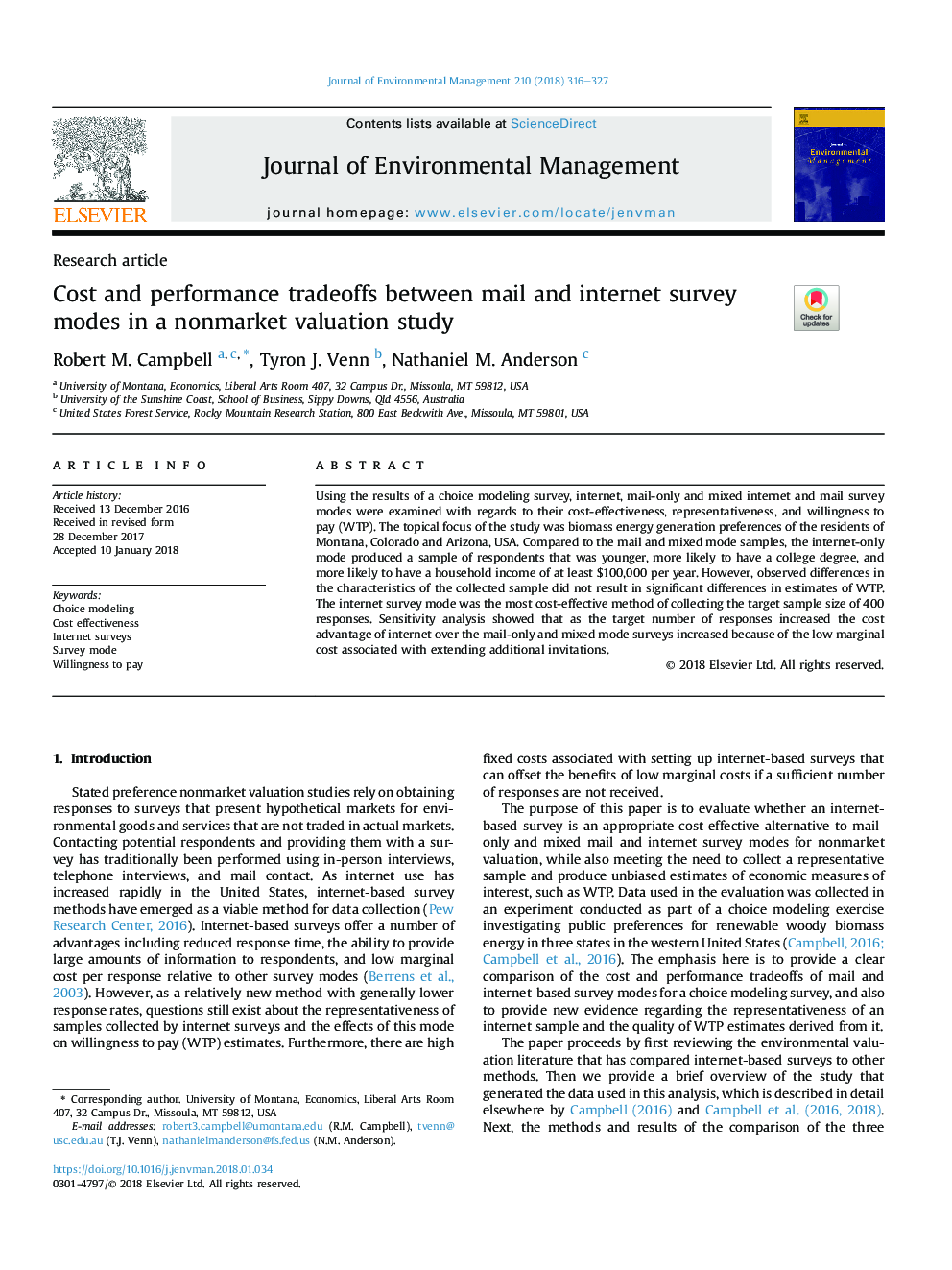| Article ID | Journal | Published Year | Pages | File Type |
|---|---|---|---|---|
| 7478353 | Journal of Environmental Management | 2018 | 12 Pages |
Abstract
Using the results of a choice modeling survey, internet, mail-only and mixed internet and mail survey modes were examined with regards to their cost-effectiveness, representativeness, and willingness to pay (WTP). The topical focus of the study was biomass energy generation preferences of the residents of Montana, Colorado and Arizona, USA. Compared to the mail and mixed mode samples, the internet-only mode produced a sample of respondents that was younger, more likely to have a college degree, and more likely to have a household income of at least $100,000 per year. However, observed differences in the characteristics of the collected sample did not result in significant differences in estimates of WTP. The internet survey mode was the most cost-effective method of collecting the target sample size of 400 responses. Sensitivity analysis showed that as the target number of responses increased the cost advantage of internet over the mail-only and mixed mode surveys increased because of the low marginal cost associated with extending additional invitations.
Related Topics
Physical Sciences and Engineering
Energy
Renewable Energy, Sustainability and the Environment
Authors
Robert M. Campbell, Tyron J. Venn, Nathaniel M. Anderson,
